Inside Hope Shelter, the only short-stay refuge still open on the Polish border
More than two years on from Russia's full-scale invasion of Ukraine, the flood of refugees into Poland has dwindled to a trickle. In response, all but one of the short-stay refugee shelters that had been operating in Przemysl, a quiet Polish city next to the Ukrainian border, have now closed. These closures have left Poland ill-prepared for any refugee surges, which so far have only been seen on a small scale.
The onset of colder weather each year prompts an increase in the numbers arriving in Poland, but changes in the progression of the war can cause a more sudden spike. The destruction of the Kakhovka Dam and Russian territorial gains have both prompted temporary increases in refugees. The only option left now for refugees arriving in Przemysl and needing somewhere to stay for a few nights is Hope Shelter, which has a capacity of 106.
Without this option, refugees are likely to end up sleeping on the streets again, or in the train station, as was common in March 2022. Hope Shelter has been left fighting for survival as humanitarian funding is diverted to new crises, with many major humanitarian organisations leaving Przemysl and focussing their efforts on Gaza.
Advertisement:The team of volunteers at Hope Shelter continue to work hard providing for Ukrainian guests, but they need funding to stay open, as well as new volunteers. To raise awareness of these challenges and highlight how important Hope Shelter is, volunteers and refugees staying at the shelter have shared their stories.
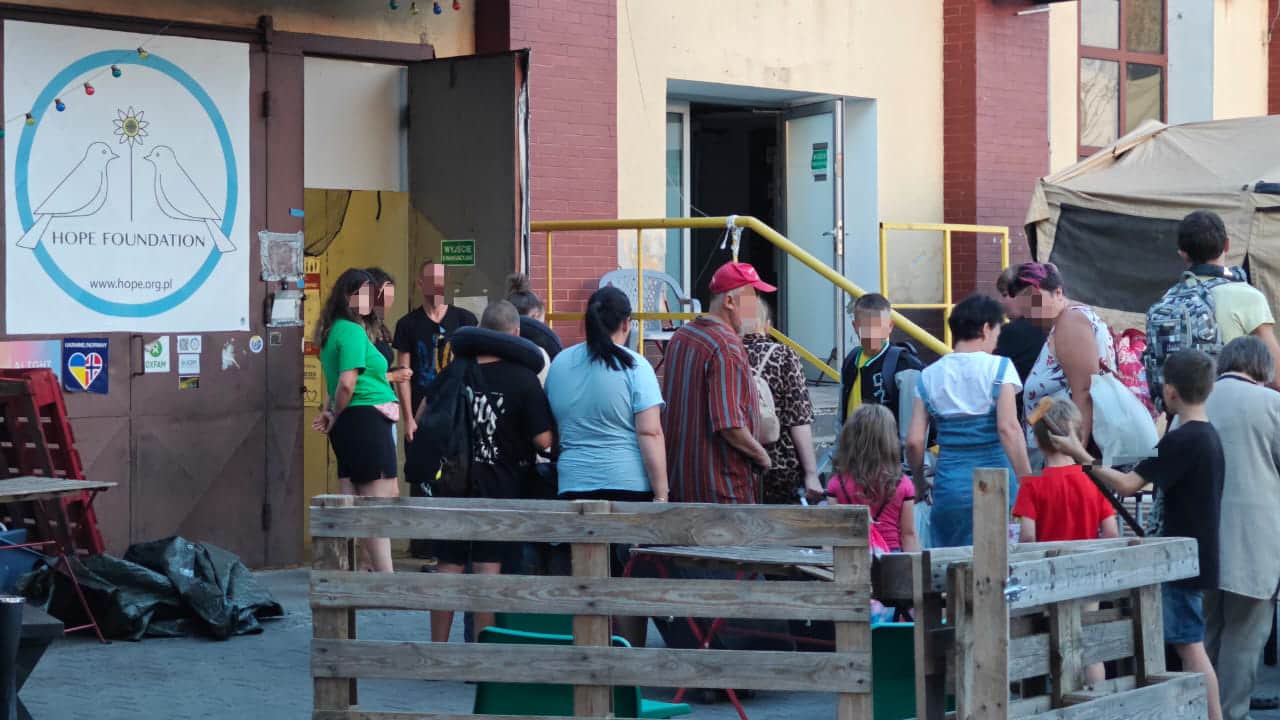 Shelter guests waiting for their onward transportAll photos are provided by author
Shelter guests waiting for their onward transportAll photos are provided by author
Creating the shelter
Hope Shelter was founded in October 2022 as a result of the downsizing of Tesco, a former supermarket that was adapted to become a humanitarian aid centre, initially with capacity for over a thousand.
In autumn 2022 the Tesco refugee shelter was taken over by the Polish Red Cross and the capacity reduced to a few hundred, prompting Tesco shelter volunteers Jacek and Jay to open Hope Shelter, which would be run by international volunteers. Initially the shelter was just a large room, but over time volunteers added bunk beds and partitions, creating small rooms for each family. Breakfast, lunch and dinner is provided each day, cooked either by volunteers or Ukrainians, who often produce huge batches of varenyky for the whole shelter.
Hope Shelter is entirely volunteer-run and has no paid staff. Volunteers pitch in on all tasks, whether it's cleaning, registering guests or helping them to plan their next steps, and generally work 12-hour days, plus night shifts when required. Refugees normally stay for a few days before moving on to their next destination, and the shelter is supported by other organisations who arrange onward travel.
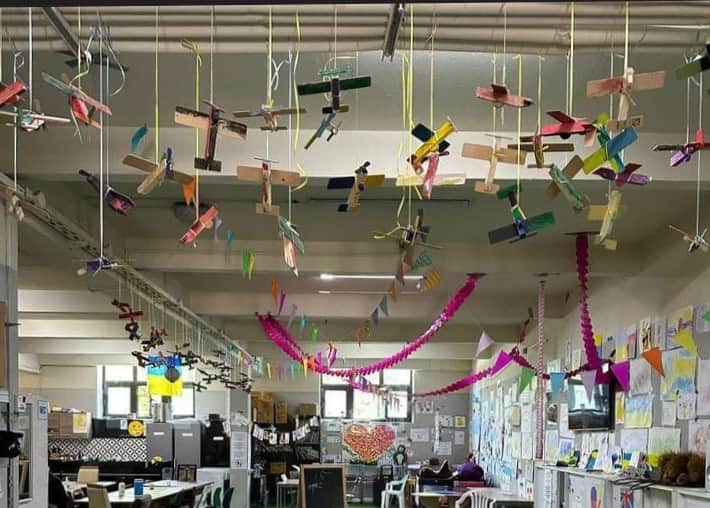 Painted planesAll photos are provided by author
Painted planesAll photos are provided by author
Hope Shelter has a rare cosiness and sense of community.
The walls are adorned with children's artwork, murals painted by volunteers and decorated planes. When it opened it was the only shelter in Przemysl that accepted pets, and since then, alongside the usual dogs and cats, it has hosted a rat, a parrot, rabbits and a ferret. Many Ukrainians can't contemplate leaving home without their pets, who for many have been their only source of comfort.
No one is asked to part with them at Hope, and the children staying often help to entertain the animals.
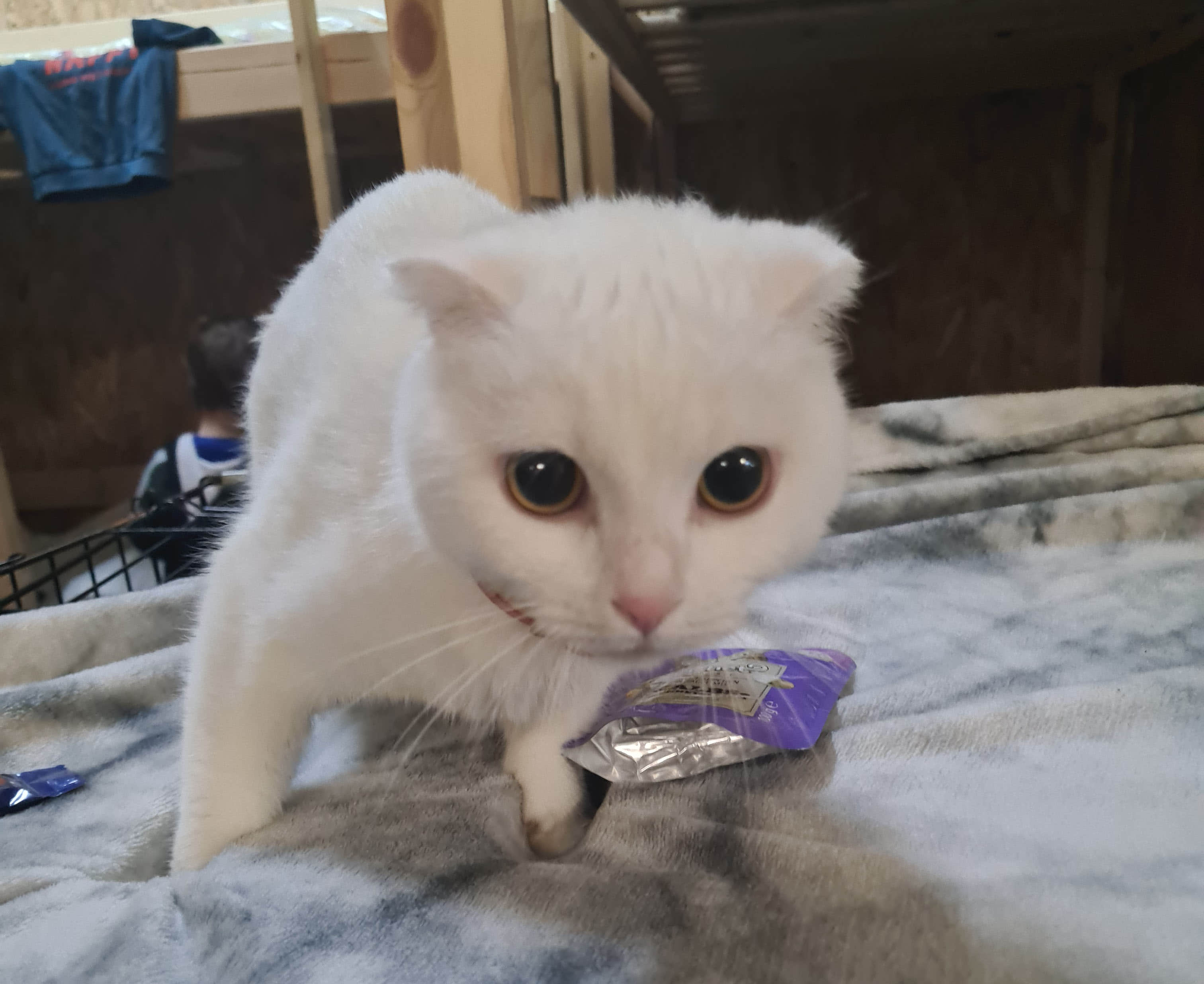 A shelter guestAll photos are provided by author
A shelter guestAll photos are provided by author
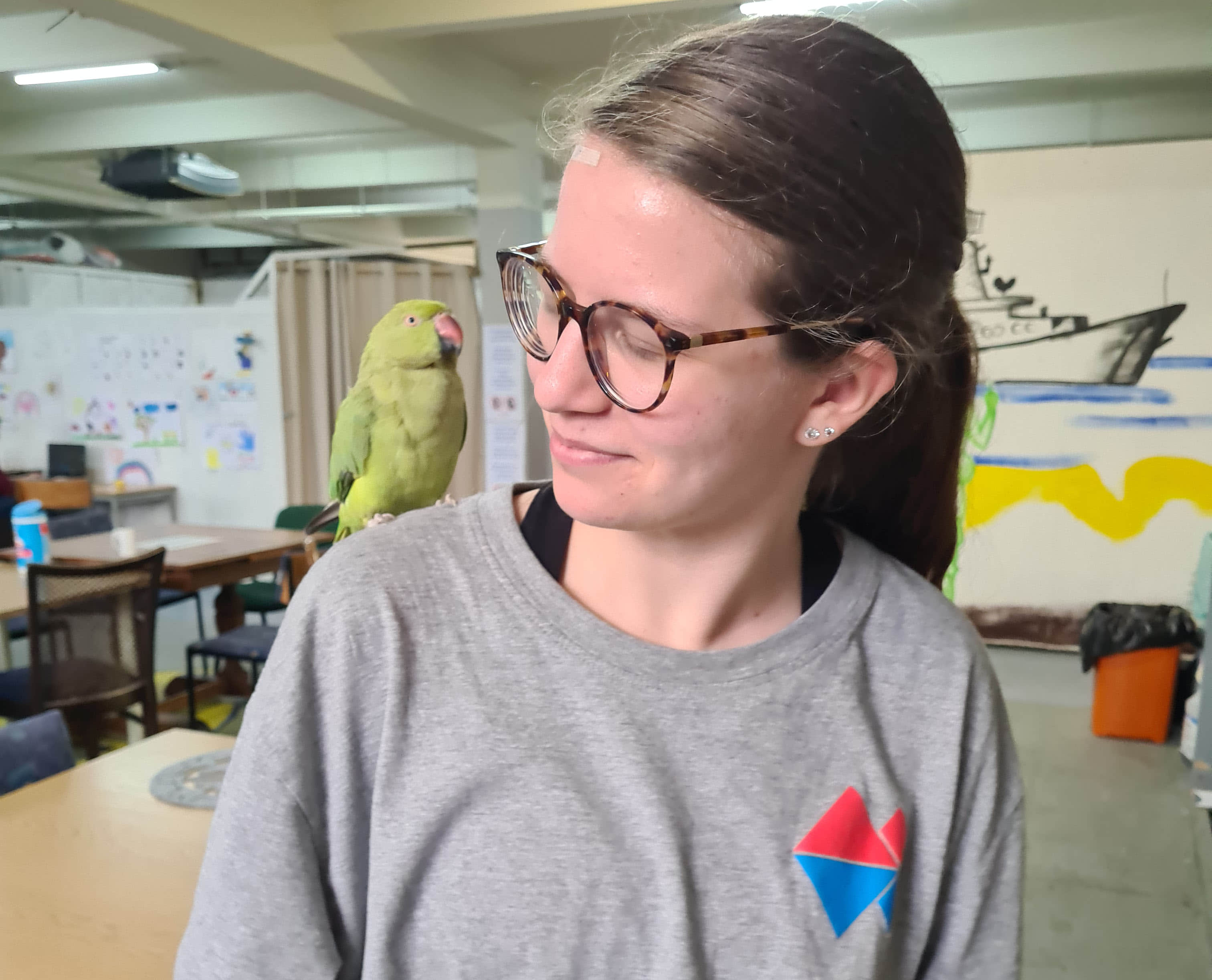 Bea Barnes with the pet parrotAll photos are provided by author
Bea Barnes with the pet parrotAll photos are provided by author
Richard
Richard has been a full-time volunteer at the shelter for more than a year. Originally from the UK, he moved to Poznan, Poland, in 2019, and after the full-scale invasion he worked at a dog shelter that helped dogs from Ukraine. After hearing about Hope Shelter, Richard moved to Przemysl in April 2023 and has been a full-time volunteer ever since.
"One memory that sticks in my mind is meeting a woman who was travelling with her son, who was autistic and needed frequent care. She spoke French, and we played chess together and talked in French. She told me she was leaving Ukraine as there was nothing left there for her.
Her husband had been killed in action, and in the same week her only brother was also killed. She has since managed to settle in Germany, where she's been able to get her son the education he needs." Many people arrive at the shelter having gone through extremely challenging periods in their lives, but the atmosphere inside is cheerful and light.
When someone has a birthday at the shelter, everyone joins in the celebrations and bakes cakes together. "I was surprised at how stoic people are. Most people help with the cooking and cleaning without being asked.
They make the best of their situation." Richard stresses how important Hope Shelter has been for the volunteer community. "Hope Shelter has become a focal point in Przemysl.
We are there to help out volunteers from other organisations, and the team at Hope feels like family."
Katya
Katya is a 21-year-old Ukrainian student and has been a volunteer at the shelter since January 2023. She joined the team after the closure of Tesco refugee shelter, where she had begun volunteering while studying remotely. As well as Hope founders Jacek and Jay, Katya also worked at Tesco with Erbse, who has since joined the team at Hope Shelter.
Erbse is a German volunteer who also manages the Volunteer Housing Initiative (VHI) house in Przemysl where Katya has lived for the last six months. VHI provides accommodation for volunteers, allowing them to continue working for much longer than would otherwise be affordable. Katya's main role at Hope Shelter is as an interpreter, as she speaks Ukrainian, Russian, Polish, English and French, but she is also one of the shelter site managers, handling everything from refugee casework to serious medical issues.
Working 12-hour shifts can be challenging, but meeting the guests' needs comes first. She meets many elderly people who are leaving Ukraine for the first time in their lives, often travelling from areas very close to the contact zone. They struggle with the change and uncertainty, and having a volunteer who can speak to them in their native language can help them to cope.
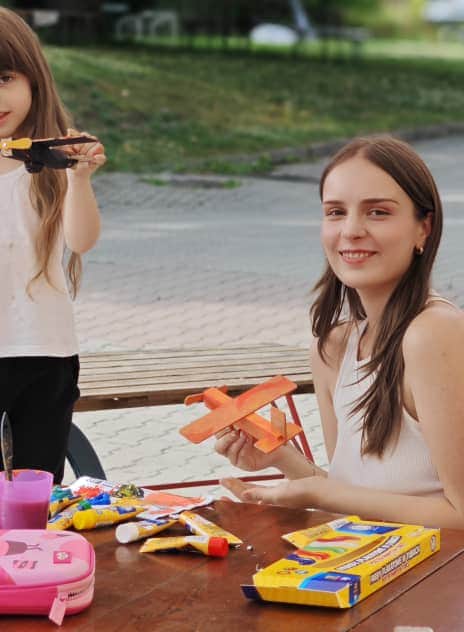 Katya making wooden planes at the shelterAll photos are provided by author
Katya making wooden planes at the shelterAll photos are provided by author
Alex
One of Hope Shelter's newest volunteers is Alex, a 22-year-old Welsh student, who volunteered at the shelter for two weeks in July.
Since February 2022, he has been trying to raise awareness of the war and its humanitarian impact, while donating to help Ukraine. As interest in the war has waned, Alex tried to increase his efforts to make up for other people's fading interest. He decided he needed to help directly and arrived at Hope Shelter in July this year.
He says he values morality and humanity over money or power, and that issues at home seem small compared to the reality Ukrainians face every day. "Hearing first-hand accounts from Ukrainians staying at the shelter was deeply emotionally difficult, but it reinforced my motivation to do what is right and improve people's lives to the best of my ability. Volunteers at the shelter were often people's first human contact since leaving Ukraine, and it's very important they feel safe and are looked after.
Many people come from frontline areas and have complex needs. Food was a major help in boosting people's mood, and borshch was always a highlight. Hope Shelter provides a safe and warm haven for people when they need it most.
Volunteering there was by far one of the best things I've done, and an experience I won't forget. I'm looking to return when I can, as the work will continue as long as there are refugees in need."
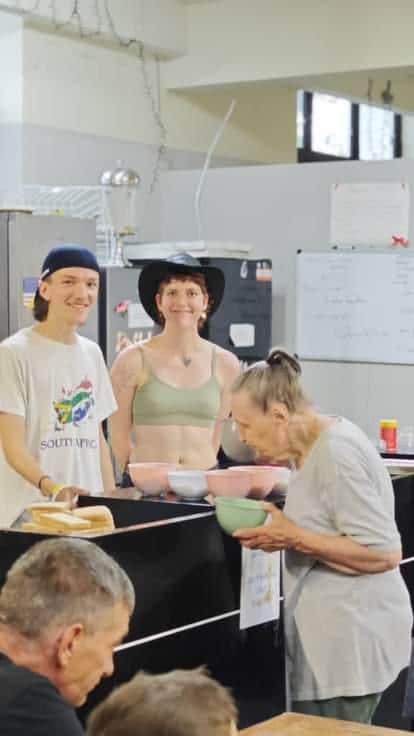 Alex (left) with fellow volunteer Charlie, from AustriaAll photos are provided by author
Alex (left) with fellow volunteer Charlie, from AustriaAll photos are provided by author
Olena
One of the Ukrainians currently staying at the shelter is Olena. She came from Pokrovsk, Donetsk Oblast, with her husband and two children, who are fourteen and four.
They are travelling on to Karlsruhe, Germany, where there is another refugee shelter. Olena used to work in an auto shop, but had to quit her job when the war started as all the nurseries and schools closed. Their home is only 6 km from the contact zone, and the city is shelled constantly.
The entire infrastructure has been destroyed: hospitals, schools and nurseries. People are managing to live without electricity, gas and water, which was cut off again two months ago after a new water supply system was destroyed. Olena and her family wanted to stay, but the situation has been escalating, and the family finally left when the authorities introduced the mandatory evacuation of all children.
Even so, some families refuse to leave. Olena remembers a 4-year-old child who was injured recently by a rocket fragment. The city has no air defence, and sirens don't go off until the first missile has already struck.
Olena believes Russian forces are aiming for the Ukrainian military, but often miss and hit civilian targets instead. Her family is scared of all the unknowns that will come with going to Germany, but they are grateful to all the shelter volunteers for their warm welcome and care.
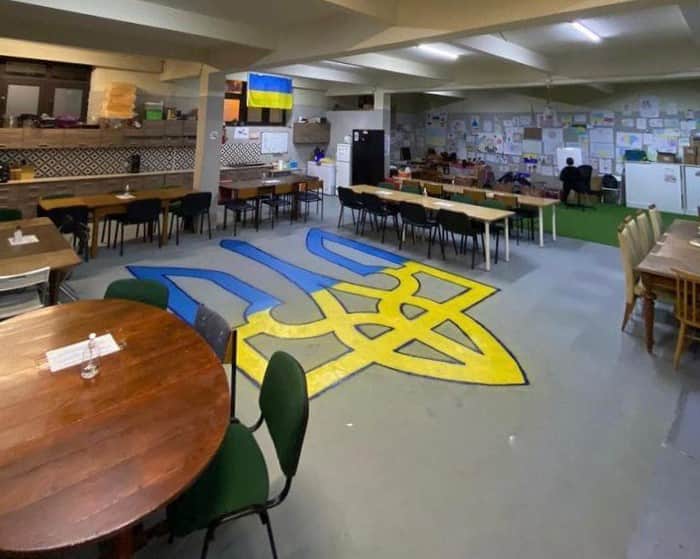 Inside the shelterAll photos are provided by author
Inside the shelterAll photos are provided by author
Oleksandra
Oleksandra is 73, and was living in a village called Inzhivka, in the Zaporizhzhia region of southeast Ukraine, close to the sea. She describes it as "heaven on earth".
Her village was occupied by Russian forces, and she remembers the occupation with anguish. They had no internet, and it was impossible to withdraw money. Her family were starving.
They used to soak bread in water, add an egg and make "cutlets", designed to look like meat. After three months of occupation, the Russian forces began to bring rations, a kind of soup that came in jars. The food was so bad, even the dogs would refuse to eat it.
Some people began collaborating with the Russians and would hang up Russian flags and symbols, which won them access to the internet. Oleksandra says the Russian occupiers wiped out almost all of the birds in the region, because they liked to kill time by hunting. Oleksandra grew up in Ternopil and began working for the state railways in the 1970s.
After the collapse of the USSR, her job disappeared, and she began working for the military commissariat, moving to the Zaporizhzhia region of Ukraine. After seven months of living under occupation in Inzhivka she was able to leave to join her daughter in Odesa, who travelled with her to Hope Shelter alongside her two grandchildren, who are nine and six. Her daughter is both pregnant and disabled.
They are heading to Frankfurt with the help of Rubikus, an NGO that partners with Hope Shelter to provide onward transport to refugees. Oleksandra stresses her gratitude to the volunteers at the shelter for supporting them throughout their journey. She describes how welcoming they were when she arrived, doing everything they could to make the guests feel safe and comfortable.
Even though most of the volunteers don't speak Ukrainian, they try to communicate with the guests in other ways to make them feel heard.
Nadiia
Nadiia came to the shelter with her whole family, including her elderly mother-in-law and her husband's brother Serhii, who has cerebral palsy and is in a wheelchair. "The volunteers at the shelter have big hearts - they fed us and welcomed us as if we were at home. The day began with smiles, tea and coffee, and amazing pasta.
Then the volunteers would start making beds, still smiling, despite being exhausted from long hours caring for refugees and not getting enough sleep. Everyone had the chance to help to prepare food and make tin candles for the military, to help distract us from thinking about the war. This wonderful team then took us to the train station, carrying our suitcases and giving us gifts for the road.
There are probably no words to express our gratitude for their help. Thank you!!"
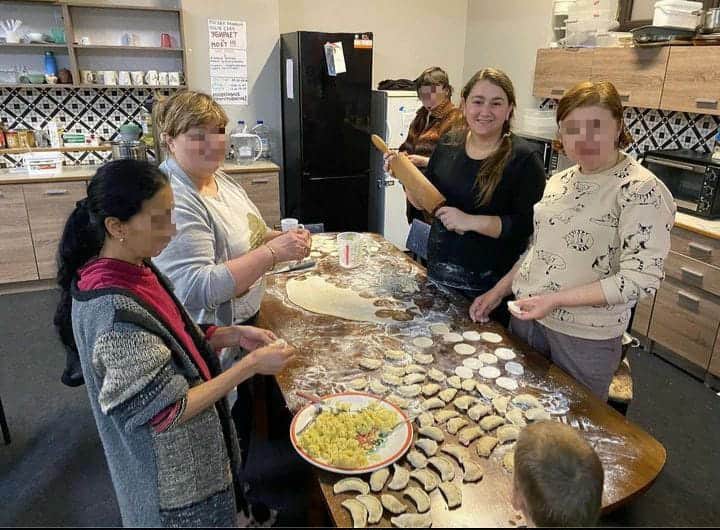 Nadia making varenyky with other guestsAll photos are provided by author
Nadia making varenyky with other guestsAll photos are provided by author
Having a safe place to stay is crucial for the Ukrainians who arrive in Przemysl, many of whom have lived under occupation, have had their homes destroyed or are suffering from serious trauma. The shelter's warmth and daily routine can go some way to making life a little easier.
This is only possible thanks to the selfless work of volunteers, and through donations and fundraising. Hope Shelter is in need of both, and encourages people to reach out, even if they only have a week to volunteer or a small amount to donate. Hope can be contacted via their website, or on Instagram, where they share daily life at the shelter.
By Bea Barnes
Editing: Teresa Pearce